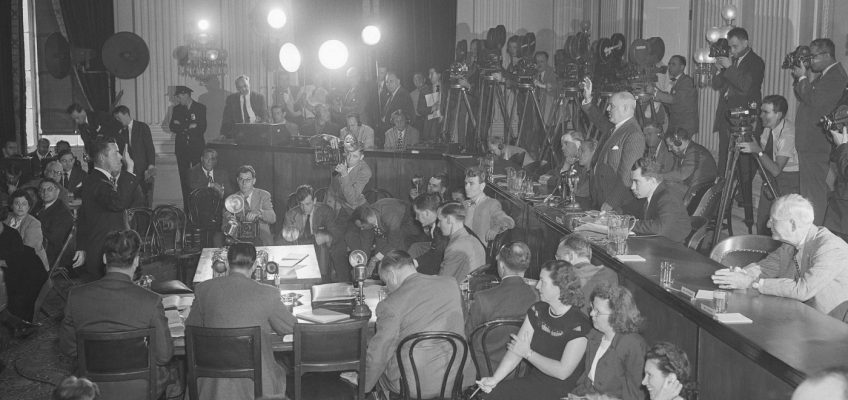While Minnesota’s regular season opener is slated for Wednesday in Portland, the NBA kicks off Tuesday when Oklahoma City hoists a banner ahead of its bout with Kevin Durant and the Houston Rockets.
Ahead of another NBA season, here’s a look at what to watch for this season, followed by a prediction of each team’s finish:
Is there parity?
There have been six different champions over the past six seasons, which suggests the league is wide open. But it’s far from a crapshoot once the playoffs arrive.
The last four NBA champions had home-court advantage in every round of the playoffs en route to the title.
Denver was the clear top team in the West three years ago, while Boston and Oklahoma City were the obvious teams to beat in the entire NBA each of the past two seasons.
So while perhaps it’s possible for any team to rise to the top this season, you better do your work to separate yourself during the regular season.
Health over everything
While load management is often a dreaded talking point in the NBA season – and perhaps not the best overall practice – last season’s playoffs put into focus how important health is. The NBA season spans eight months for the eventual champion, and all it takes is one injury to end your title hopes.
The losses of Jayson Tatum, Tyrese Haliburton and Steph Curry ultimately doomed the Boston Celtics, Indiana Pacers and Golden State Warriors at various points of the postseason, while Aaron Gordon essentially playing on one leg left Denver defenseless in Game 7 of the conference semifinals against Oklahoma City.
With such a long regular season leading up to the marathon that is the physical postseason game, whichever top-tier team is lucky enough (or smart enough?) to keep its best players on the floor might be the one lifting the trophy come June.
Here’s a team-by-team look at the league, with a prognostication of their regular-season record.
The West
Thunder (59-23) – Motivation and fatigue are concerns for any defending champion in its pursuit of a repeat. They’re the only concerns that exist for this deep, talented roster.
Nuggets (54-28) – This is the best Denver roster ever constructed in the Nikola Jokic era, with the depth and shooting to legitimately challenge Oklahoma City.
Timberwolves (53-29) – Is continuity enough to help Minnesota take that final step in the postseason? Probably not. Anthony Edwards will need to be a two-way, MVP-caliber player for Minnesota to win the West.
Rockets (49-33) – Kevin Durant should help Houston score late in the games when the Rockets need buckets. But the injury loss of Fred VanVleet will put more on the plate of rising star Amen Thompson.
Lakers (48-34) – Luka Doncic looks like a potential MVP candidate given his current form and conditioning. But LeBron James’ health could be a lingering issue for the Lakers.
Warriors (46-36) – Golden State showed itself to be a legitimate threat in the West in the spring pre-Steph Curry injury. How much stock will the veteran Warriors put into the regular season?
Clippers (44-38) – They’re really old, but they also have the depth to consistently rotate veterans in throughout the regular season. But the Clippers haven’t won a playoff series since 2021.
Pelicans (42-40) – A healthy Zion Williamson is one of the NBA’s most dominant forces and could even lift this New Orleans roster to the playoffs in the frightening Western Conference.
Spurs (42-40) – It still remains to be seen how well all the Spurs’ pieces fit together. Victor Wembanyama and the young core have a high ceiling, but there still is no dominant stretch to point to as proof of concept.
Mavericks (41-41) – Dallas’ roster looks deep and talented and may be as good defensively as anyone. But this season’s success could hinge on Kyrie Irving’s return date from an anterior cruciate ligament injury.
Grizzlies (40-42) – Ja Morant and Jaren Jackson Jr. remain strong basketball pillars, but there are simply too many injury concerns around this team to expect any level of consistent success.
Trail Blazers (38-44) – Offensive concerns for the Blazers are legitimate, but this might be the most tenacious defensive team in the NBA.
Kings (35-47) – Sacramento can scare opponents on any given night with its level of offensive firepower. But there aren’t many defensive stoppers to be found on that roster.
Suns (32-50) – Getting Durant and Brad Beal out of Phoenix provided a needed reset for the Suns. But there’s just not much talent on this roster. A young frontline needs to find its way, and fast.
Jazz (17-65) – Ace Bailey could prove to be a legitimate building block for Utah, which is heading towards another obvious tanking season.
East
Cavaliers (54-28) – The Cavaliers are running it back with the same roster that finished with the East’s best record last season. Can a healthy version of this core have better playoff success?
Knicks (50-32) – Tom Thibodeau was fired seemingly as a scapegoat for a front office that had to explain why it wasn’t better than the Pacers after making such all-in trades last offseason. What happens if this season’s results aren’t any better?
Hawks (50-32) – Atlanta went from seemingly lost in the sea of middling a year ago to now sporting one of the best, most dynamic young rosters. Does Trae Young fit the long-term vision?
Magic (48-34) – An all-in trade for Desmond Bane should help the Magic level up. Just how immediate those dividends are remains to be seen.
Pistons (46-36) – The leap from bad to good is far easier than the one from good to great. But Jaden Ivey’s return from last season’s injury could help Detroit achieve the latter.
Pacers (45-37) – No, they don’t have Tyrese Haliburton after his Game 7 Achilles injury. But the Pacers do have their firm identity of a high-pace team, and a guard in Andrew Nembhard more than capable of running the show.
Bucks (43-39) – Milwaukee is leaning into a youth movement, surrounding Giannis Antetokounmpo with a more athletic, defensive core. At worst, the Bucks should be frisky.
Raptors (40-42) – Toronto won a lot of games at the end of last season by virtue of playing hard. If that can be replicated over the course of a full season, the Raptors could be playoff bound.
Celtics (38-44) – Boston’s offseason suggested this season will be treated as a reset season while Jayson Tatum recovers from his Achilles tear. While Jaylen Brown and Derrick White are still around, the roster is paper thin.
76ers (37-45) – If Joel Embiid is healthy, this number will be far too low. But if he has any injury concerns, this team is set up to again lose a lot of games.
Heat (37-45) – Miami continues to trot out a star-less roster without a true identity or direction in the wake of the Jimmy Butler era.
Bulls (36-46) – The run-and-gun Bulls are a fun watch that just don’t figure to consistently win games until they find an athletic center to better fit their current roster.
Hornets (34-48) – Charlotte has a lot of talented, young pieces. There’s an opportunity to finish much higher than this if the puzzle fits together correctly.
Wizards (17-65) – A roster full of intriguing young pieces. But the Wizards could stand to provide them with more direction in order to aid development.
Nets (15-67) – With so many rookies mixed with competent veterans, how Brooklyn divides minutes within its rotation throughout the season will be interesting.
Playoff predictions
Western Conference finals: Oklahoma City over Denver in seven games
Eastern Conference finals: Cleveland over Atlanta in six games
NBA Finals: Oklahoma City over Cleveland in five games
Minnesota Timberwolves guard Anthony Edwards (5) and head coach Chris Finch, right, talk during the second half of an NBA basketball game against the Cleveland Cavaliers, Saturday, Jan. 18, 2025, in Minneapolis. (Abbie Parr / Associated Press)




